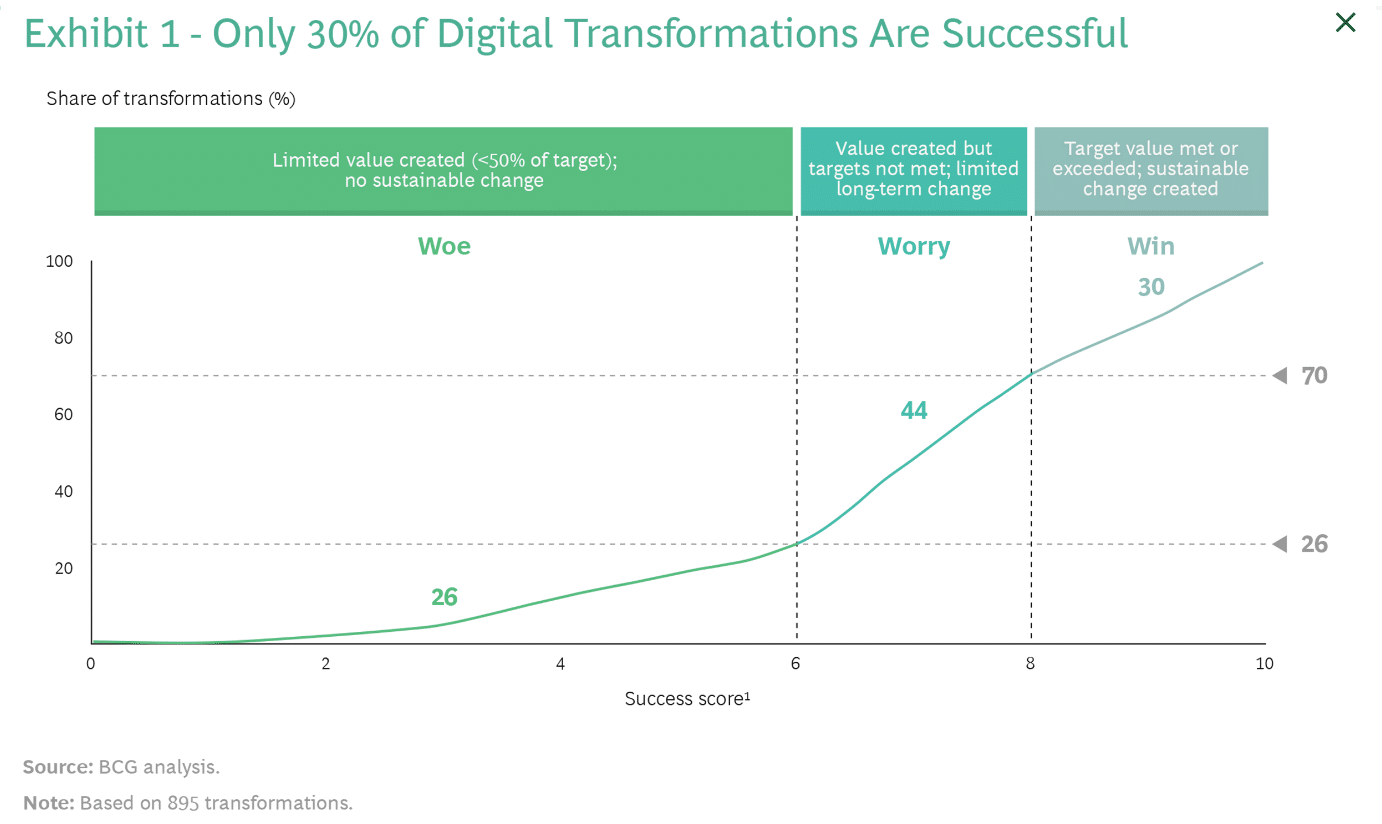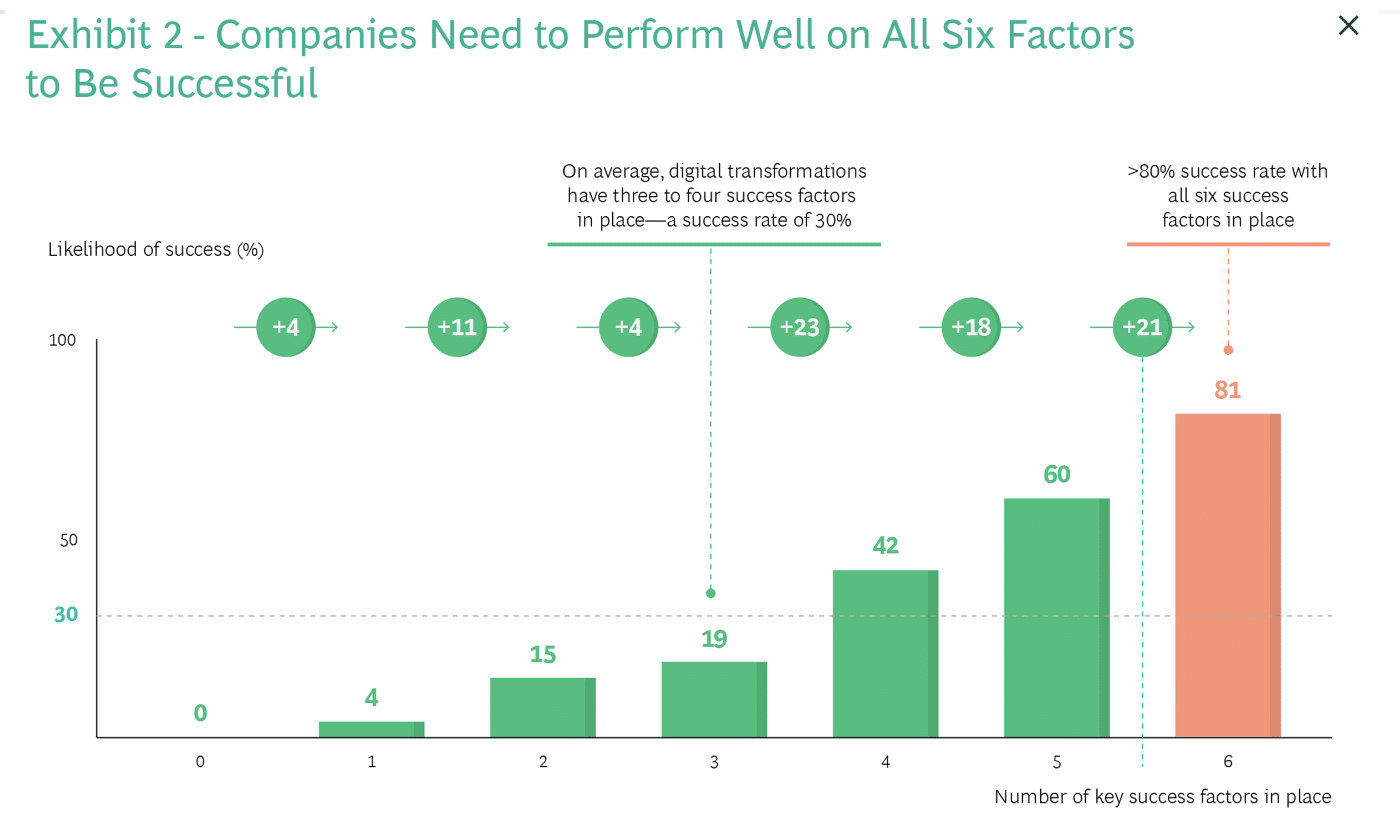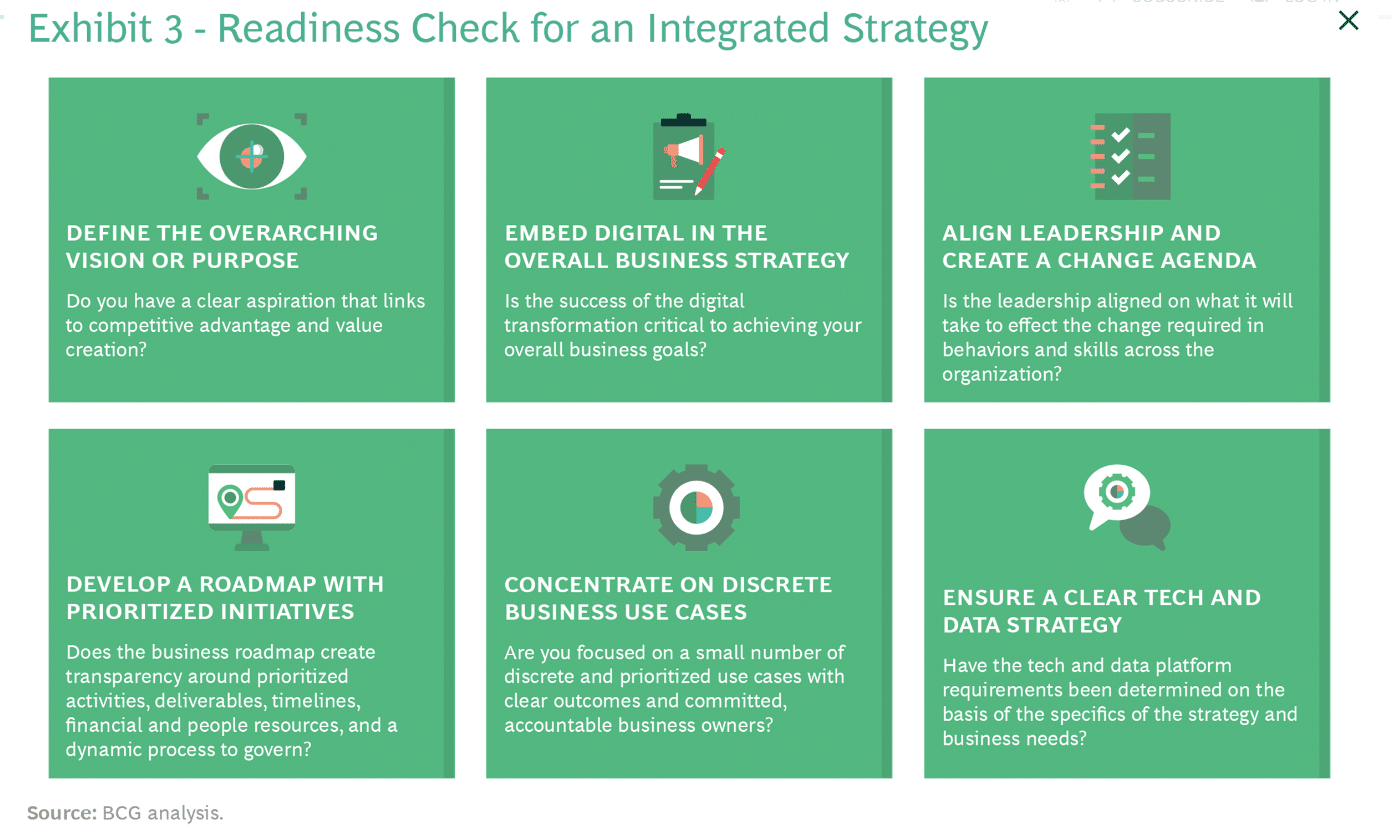Even as COVID has amplified the need for companies to implement successful digital transformations, most transformations fail—but making sure that six critical success factors are in place can reverse the odds of success from 30 percent to 80 percent, according to new research from Boston Consulting Group (BCG).
BCG’s new report, Flipping the Odds of Digital Transformation Success, reveals that only 30 percent of transformations met or exceeded their target value and resulted in sustainable change. Another 44 percent created some value but did not meet their targets and resulted in only limited long-term change. A final 26 percent created limited value (less than 50 percent of the target) and produced no sustainable change.
From a comparative point of view, successful transformations created, on average, 66 percent more value, improved corporate capabilities by 82 percent, and met 120 percent more of their targets on time than transformations that created only limited value. Compared with those that created some value, winners created 29 percent more value, improved capabilities by 20 percent, and met 32 percent more targets on time.
The results are important because the research also shows that more than 80 percent of companies plan to accelerate their companies’ digital transformations, largely in response to the COVID-19 pandemic. Digital leaders achieve earnings growth that is 1.8 times higher than digital laggards—and more than double the growth in total enterprise value.
“In the short term, digital technologies and ways of working offer productivity improvements and better customer experiences,” said Patrick Forth, a BCG managing director and senior partner and a coauthor of the report, in a news release. “In the medium term, digital opens up new growth opportunities and business model innovation. Successful transformations also set companies up for sustained success; they won’t have to digitally transform again as they master continuous innovation.”
The six success factors are:
-
An integrated strategy with clear transformation goals
The strategy describes the why, the what, and the how, which are tied to specific, quantified business outcomes.
-
Leadership commitment from CEO through middle management
The company has high leadership engagement and alignment, including often-overlooked middle-management ownership and accountability.
-
Deploying high-caliber talent
Management identifies and frees up the most capable resources to drive the transformation program.
-
An agile governance mindset that drives broader adoption
Leaders address roadblocks quickly, adapt to changing contexts, and drive cross-functional, mission-oriented, “fail-fast-learn” behavioral change into the wider organization. They deal with individual challenges without losing sight of the broader goals.
-
Effective monitoring of progress toward defined outcomes
The company establishes clear metrics and targets around processes and outcomes, with sufficient data availability and quality.
-
Business-led modular technology and data platform
The company puts in place a fit-for-purpose, modern technology architecture driven by business needs to enable secure, scalable performance, rapid change deployment, and seamless ecosystem integration.
When tackling these six factors, companies must satisfy two conditions. First, management needs to make sure that each of the six is adequately addressed in their planning, preparation, and execution. Most companies put effort into this, but the majority of these organizations do not address each factor sufficiently. Second, it is crucial to address all six factors. Companies that adequately addressed only three or four failed. Of all of the possible combinations examined, none had the same impact on success as these six.
BCG’s research involved both internal and external data sets: internal data from BCG’s experience working with 70 leading companies worldwide on their digital transformations over the past several years and external data from the responses of 825 senior executives in a detailed survey about their transformation experience.
“The positive and material impact of the six success factors can be seen across all types of digital transformation, geographies, and industries,” said Tom Reichert, the chairman of global practices at BCG, the global leader of DigitalBCG, and a report coauthor, in the release. “That said, it is neither practical nor desirable to delay transformation in pursuit of perfection. Instead, winners will be aware of shortcomings and will put an action plan in place to address each as they proceed.”
In the survey, executives were asked to assess their transformations on a scale of 1 to 10. Success was defined to include the percentage of predetermined targets met and value achieved, the percentage of targets and value met on time, the success relative to other transformations, and the success relative to management’s aspirations for sustainable change. The research tested more than 35 factors that reflect commitment, strategy and approach, governance, financial and people resourcing, and technology enablers.











